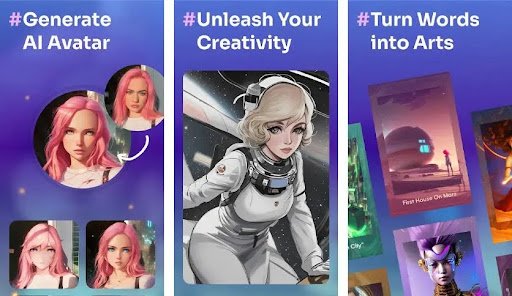Natural language processing (NLP) and text-to– image creation taken together have transformed the way we produce images from written descriptions. Translation text into coherent and meaningful visuals depends much on NLP, a subfield of artificial intelligence allowing robots to comprehend and interpret human language. NLP guarantees that created graphics fairly represent the intended meaning and context by means of analysis and processing of user inputs. Examining how NLP improves the technology, the fundamental approaches involved, and the future possibilities of this creative sector, this paper explores the important part NLP plays in text-to- picture generating.
Basics of Natural Language Processing (NLP)
Definition and basic ideas of natural language processing
A area of artificial intelligence, natural language processing (NLP) studies how computers interact with human language. It entails the creation of models and algorithms allowing robots to comprehend, interpret, and create human language in a way that is both significant and practical. Effective text processing and analysis depend on a knowledge of language structure, semantics, and context, so core ideas of NLP are those ones.
Key NLP Techniques and Methodologies
NLP analyses and handles text using a number of important approaches and tools. Tokenising text—that is, separating it into smaller pieces—such words or phrases—helps one analyse it more readily. While syntax parsing looks at sentence grammatical structure to discern links between words, semantic analysis concentrates on understanding the meaning underlying these tokens. These approaches together improve the accuracy and performance of NLP systems, hence allowing advanced text analysis and interaction.
How NLP Enhances Text-to-Image Generation
Recognising Text Prompts
Through precisely comprehending text cues, NLP improves text-to—image generation. Paragraphing the material helps one find important components including people, situations, activities, and emotions. NLP can find the subtleties and particular elements needed to create pertinent visuals by examining the context and semantics of the text. This stage guarantees that the artificial intelligence understands the intended vision of the user, therefore laying a basis for precise image production.
Conversion of Language into Visual Data
NLP converts words into visual data after one understands the text. This is matching words and phrases to related graphic images. NLP systems anticipate and create visuals depending on the input text using large databases and trained models. Image captioning and visual storytelling help to translate descriptive words into logical visual components. The outcome is a picture that captures the core and elements the user requested, therefore reflecting the story told in the text prompt.
Correcting Relevance and Accuracy
Moreover, NLP is rather important for raising the relevance and correctness of the produced pictures. NLP systems may improve their forecasts and more closely match user intent by using cutting-edge machine learning models and constant training on varied datasets. This iterative procedure guarantees that the photos are not only excellent but also well matched with the given descriptions, therefore helping to reduce differences between the text and the produced visuals. More pleasing and exact visual outputs from improved accuracy and relevance translate into a more dependable and successful text-to– picture generating process.
Core NLP Technologies in Text-to-Image Systems
Natural Language Understanding (NLU)
Text-to—-image systems depend fundamentally on Natural Language Understanding (NLU). It requires understanding difficult text inputs to obtain pertinent data required for image production. Semantic analysis—where the meaning of words and phrases is deciphered—and entity recognition—which notes particular items, persons, and sites referenced in the text—are among NLU approaches. Understanding the context and meaning underlying the text helps NLU to produce visuals that faithfully portray the stated events, people, and environments.
Models in Machine Learning
Using vast datasets to train neural networks that predict and generate visual information from textual descriptions, machine learning models are the foundation of text-to– picture creation. By learning correlations between words and images, these models enhance their capacity to provide reasonable and pertinent visualizations over time. This approach makes frequent use generative adversarial networks (GANs) and convolutional neural networks (CNNs). These models improve the capacity of the system to generate high-quality pictures matching with user instructions by always learning from several sources.
New Algorithms and Methodologies
Text-to—image systems are much improved by advanced algorithms and methodologies including transformer models and architectures like BERT (Bidirectional Encoder Representations from Transformers) and GPT (Generative Pre-rained Transformer). These technologies are quite good in context, preserving coherence in created images, and raising the general visual output quality. For instance, transformers help text to interpret long-range relationships, therefore assuring that the created graphics reflect complicated circumstances and minute details. These cutting-edge methods challenge the limits of text-to– picture creation, therefore refining the technology and increasing its adaptability.
Challenges and Future Directions
Though creative, text-to—-image creation has numerous important difficulties. Accurately reading ambiguous or complicated language is a tremendous challenge as little details and context may greatly change the intended meaning of a book. This intricacy calls for sophisticated NLP models with deep semantic comprehension to guarantee that produced visuals really capture the user’s purpose. Furthermore, keeping high standards for the produced graphics is crucial; pictures have to be not only useful but also visually beautiful and sufficiently detailed to satisfy user expectations.
Managing creativity with accuracy is even another difficulty. While carefully following the descriptive features offered in the text, text-to– picture generating systems must provide inventive and varied images. Applications like marketing, narrative, and product visualization—where both accuracy and creativity are most important—depend on this harmony.
Conclusion:
Advancing text-to—-image creation and turning textual descriptions into vibrant and accurate images depends mostly on natural language processing (NLP). NLP greatly increases the capabilities of text prompts, converting language into visual data, and boosting the quality and relevancy of created images by means of better comprehension of these elements. Driving creativity and efficiency, core technologies such Natural Language Understanding (NRU), machine learning models, and powerful algorithms help to facilitate this process. Notwithstanding present difficulties, continuous developments in NLP provide a future in which text-to- picture creation is more complex, accurate, and generally applicable, hence transforming our production and interaction with visual material.



